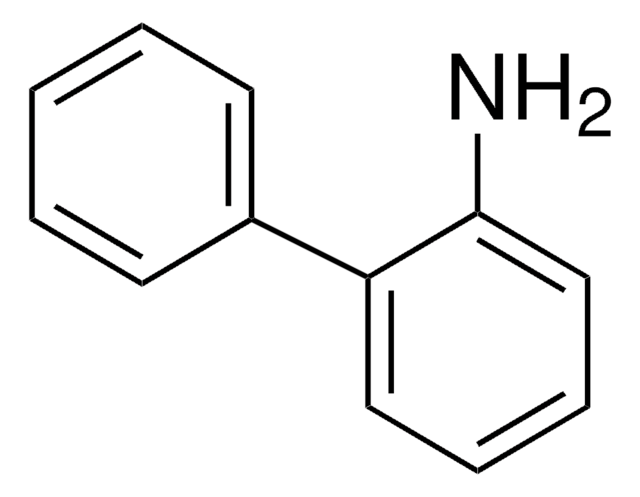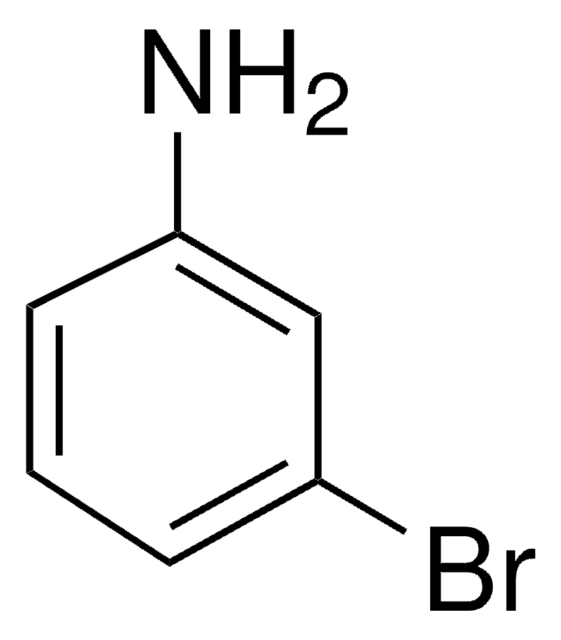All Photos(1)
About This Item
Empirical Formula (Hill Notation):
C12H11N
CAS Number:
Molecular Weight:
169.22
MDL number:
UNSPSC Code:
12352100
PubChem Substance ID:
NACRES:
NA.22
Recommended Products
assay
97%
form
solid
mp
28-33 °C
SMILES string
Nc1cccc(c1)-c2ccccc2
InChI
1S/C12H11N/c13-12-8-4-7-11(9-12)10-5-2-1-3-6-10/h1-9H,13H2
InChI key
MUNOBADFTHUUFG-UHFFFAOYSA-N
signalword
Warning
hcodes
Hazard Classifications
Acute Tox. 4 Oral - Eye Irrit. 2 - Skin Irrit. 2 - STOT SE 3
target_organs
Respiratory system
Storage Class
11 - Combustible Solids
wgk_germany
WGK 3
flash_point_f
>230.0 °F - closed cup
flash_point_c
> 110 °C - closed cup
Certificates of Analysis (COA)
Search for Certificates of Analysis (COA) by entering the products Lot/Batch Number. Lot and Batch Numbers can be found on a product’s label following the words ‘Lot’ or ‘Batch’.
Already Own This Product?
Find documentation for the products that you have recently purchased in the Document Library.
Customers Also Viewed
J W Gorrod et al.
Anticancer research, 6(4), 729-731 (1986-07-01)
The metabolism of 3-aminobiphenyl (3-ABP) and 3-acetamidobiphenyl (3-AABP) has been studied using fortified rat liver microsomal preparations. Metabolites in concentrates of ether extracts from hepatic microsomal preparations were analysed by TLC and GLC. The metabolites were characterised by a comparison
G Ronco et al.
British journal of cancer, 61(4), 534-537 (1990-04-01)
In a previous study we found that aromatic amines, particularly 4-aminobiphenyl, formed haemoglobin adducts at higher concentrations in the blood of smokers compared to non-smokers. We re-analyse here data on haemoglobin adducts of 14 aromatic amines in order to ascertain
Mohamadi Sarkar et al.
Toxicology and applied pharmacology, 213(3), 198-206 (2006-01-13)
Some aromatic amines are considered to be putative bladder carcinogens. Hemoglobin (Hb) adducts of 3-aminobiphenyl (3-ABP) and 4-aminobiphenyl (4-ABP) have been used as biomarkers of exposure to aromatic amines from cigarette smoke. One of the goals of this study was
Huimin Deng et al.
Journal of chromatography. A, 1507, 37-44 (2017-06-07)
Aromatic amines in mainstream cigarette smoke have long been monitored due to their carcinogenic toxicity. In this work, a reliable and rapid method was developed for the simultaneous determination of 9 aromatic amines in mainstream cigarette smoke by modified dispersive
M S Bryant et al.
IARC scientific publications, (89)(89), 133-136 (1988-01-01)
In a population-based study in Turin, Italy, smokers of blond tobacco showed 4-aminobiphenyl (4-ABP) adduct levels some three times higher than nonsmoking subjects, and smokers of black tobacco showed levels about five times greater than nonsmokers. A dose-response relationship between
Our team of scientists has experience in all areas of research including Life Science, Material Science, Chemical Synthesis, Chromatography, Analytical and many others.
Contact Technical Service











